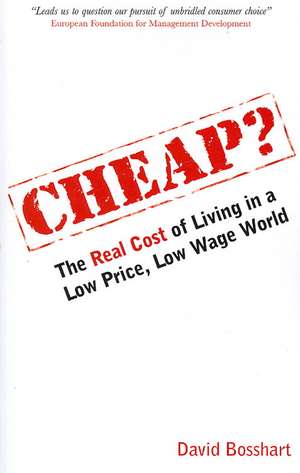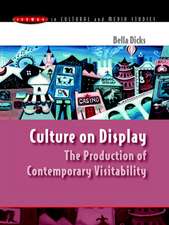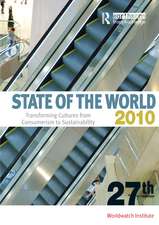Cheap?
Autor David Bossharten Limba Engleză Paperback – 30 apr 2007
Preț: 224.57 lei
Nou
Puncte Express: 337
Preț estimativ în valută:
42.99€ • 44.75$ • 35.39£
42.99€ • 44.75$ • 35.39£
Carte tipărită la comandă
Livrare economică 28 ianuarie-03 februarie 25
Preluare comenzi: 021 569.72.76
Specificații
ISBN-13: 9780749449933
ISBN-10: 0749449934
Pagini: 197
Dimensiuni: 131 x 211 x 20 mm
Greutate: 0.27 kg
Ediția:Paperback.
Editura: Kogan Page
Locul publicării:United Kingdom
ISBN-10: 0749449934
Pagini: 197
Dimensiuni: 131 x 211 x 20 mm
Greutate: 0.27 kg
Ediția:Paperback.
Editura: Kogan Page
Locul publicării:United Kingdom
Recenzii
“A powerful account of society’s greed and what it is leading to.” -- Refresh
Notă biografică
Dr. David Bosshart is the managing director of the Gottlieb-Duttweiler Institute in Zurich, Switzerland and an analyst and speaker on consumer trends, retail trends, and social change. He is also the author of Cult Marketing and The Future of the Consumer Society.
Cuprins
1 The Age of Cheap: Why (almost) everything is getting cheaper
Why the trend towards low-priced goods is changing our lives: the link between prosperity, democracy and price orientation
The four stages of development in customer behaviour
The panorama of cheap
2 The axis of evil in the economy: Wal-Mart, China and the internet
First axis: trade – Wal-Mart and the message, ‘Demand more for less!’
The second axis: the manufacturers – China and the possibilities of global sourcing
The third axis: the customer – the internet and the global customer cartel
Which factors are accelerating the trend?
The dream becomes cheaper – the bulldozer rolls on
3 The Wal-Martization of our society: How we are all becoming Wal-Mart
Why Wal-Mart concerns us all
What is Wal-Martization?
4 The models for present-day rationalization: Aldification, McDonaldization, Starbuckification etc
The rationalization models
Why are these models so rational and so successful?
5 Faster, better, cheaper: Intensified time markets drive the Age of Cheap
Time as an economic factor
The logic of increase (Logic No. 1)
Real markets mimic financial markets
The neglect of personal resources: the logic of increase means higher hidden costs for the customer
Differentiation logic (Logic No. 2): what happens when uncontrollable costs of side-effects exceed costs
6 No frills: On the illusions of the service economy
‘Outsourcing to the customer’: the myths of services
Marketing means selling goods: the myth of customer orientation
7 What is worth what? Prices in the Age of Cheap
The next chapter: The new normality in globalizing markets
Index
Why the trend towards low-priced goods is changing our lives: the link between prosperity, democracy and price orientation
The four stages of development in customer behaviour
The panorama of cheap
2 The axis of evil in the economy: Wal-Mart, China and the internet
First axis: trade – Wal-Mart and the message, ‘Demand more for less!’
The second axis: the manufacturers – China and the possibilities of global sourcing
The third axis: the customer – the internet and the global customer cartel
Which factors are accelerating the trend?
The dream becomes cheaper – the bulldozer rolls on
3 The Wal-Martization of our society: How we are all becoming Wal-Mart
Why Wal-Mart concerns us all
What is Wal-Martization?
4 The models for present-day rationalization: Aldification, McDonaldization, Starbuckification etc
The rationalization models
Why are these models so rational and so successful?
5 Faster, better, cheaper: Intensified time markets drive the Age of Cheap
Time as an economic factor
The logic of increase (Logic No. 1)
Real markets mimic financial markets
The neglect of personal resources: the logic of increase means higher hidden costs for the customer
Differentiation logic (Logic No. 2): what happens when uncontrollable costs of side-effects exceed costs
6 No frills: On the illusions of the service economy
‘Outsourcing to the customer’: the myths of services
Marketing means selling goods: the myth of customer orientation
7 What is worth what? Prices in the Age of Cheap
The next chapter: The new normality in globalizing markets
Index
Descriere
Although manufactured goods have been getting cheaper, with that trend, Bosshart warns, comes cheap morals and cheap ethics. With implications for the environment, the labor market, and for companies, "the age of cheap" comes with a price.














